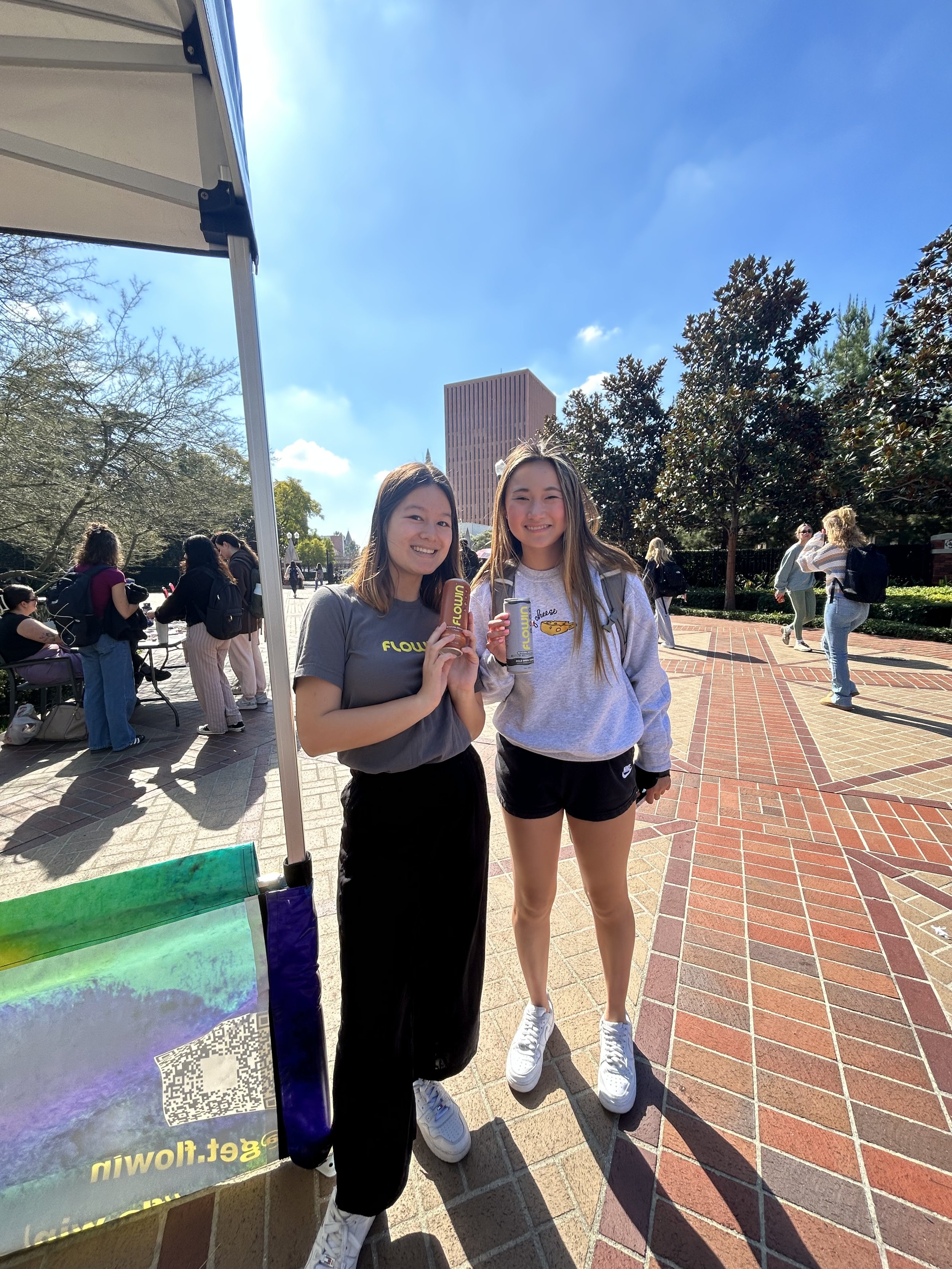How to Become a Brand Ambassador
by Kristen Adams ‘25
During my sophomore year, I came across an Instagram post from a friend. She tagged an agency called InternQueen, and as I scrolled through her page, I was in awe of the cool brands she posted about and the new products she was surrounded by. I had never considered becoming a brand ambassador before because I was scared to post advertisements on my personal Instagram account, but after completing 6 different brand ambassador programs, I’ve come to love the job! This is why I’m a brand ambassador and how you can become one too.
Understanding What the Role Entails
Being a brand ambassador is so much more than just creating content on Instagram and TikTok. Depending on the program and the brand, you may also be hosting tablings on campus, running activations, handing out flyers, organizing product drops with student organizations and sororities, or utilizing your event-planning skills to capture the attention of students at your university. For students interested in marketing, being a brand ambassador is a great way to understand the complexities and mechanics of marketing on the ground.
As a brand ambassador, I have been able to wear many different hats: content creator, social media manager, event planner. Not only are you communicating with the student population at your university, but you will also be communicating with your managers – typically an account lead at the agency – but also executives from the brand itself who are expecting results. You should be prepared to take on different deadlines, campaigns, and objectives.
Regarding the logistics of a brand ambassador program, each contract is different. Some are year-long programs, some are monthly-long programs, and others only last a few weeks. They’re typically one-time programs, and their fee structures tend to be one-time payments. However, I have participated in programs that have divided the payments into weekly chunks, with the possibility of bonuses – a bonus can be earned if a certain number of videos and tablings are successfully achieved by a certain date in the program.
Sending In Your Applications
Once you feel comfortable with the idea of being a brand ambassador, it’s time to apply and put yourself out there! The first thing I did was identify the platforms or agencies I wanted to hear about brand ambassador programs and brand deals from. My favorites are Home From College and InternQueen because they send newsletters with brand ambassador programs on a regular basis where I can learn about the responsibilities and scope of each potential gig.
As for application requirements, very few of the programs I have applied to strictly enforce a set following size on your social media pages. Some may set a minimum following of 1,000 followers, while few require anything above 5,000. However, I have seen some require a minimum number of posts on your page, just to prevent a brand ambassador from posting on an unused account.
Thinking Outside the Box
Once you get an offer – congrats – you’re now going to be onboarded as a brand ambassador! Most brand ambassador programs I’ve participated in start with a training session so you’re completely clear on what the expectations are, what the deliverables are, and what your action items are. Sometimes you’re completely on your own, posting content and hosting your own tablings; and sometimes you’re working with a partner to create the most engagement possible. Either way, being a brand ambassador is also a great way to make new friends at your university.
One thing that I love about brand ambassador programs is the freedom you have to put your own unique twist and voice on the brand or products you’re amplifying. It’s a moment to be honest, to show off your personality, and to highlight how this brand or product is incorporated into your life. One hot take I have is that it’s okay to not have used the product beforehand – in fact, trying the product for the very first time actually helps me create more authentic content, since I’m literally trying it for the first time along with my followers.
The Pros of Being a Brand Ambassador
Being a brand ambassador comes with many perks: welcome boxes, free products, insider scoop on potential new products to be released, multiple streams of income, and connections to name a few.
Zooming out, I also enjoy being a part of an ecosystem where I share the products I like – I personally try to only accept roles for brands that I respect and enjoy. I have noticed that I am more likely to try a new product, whether it’s a new coffee or a new makeup product, if I see a friend using it, or if I see someone on social media trying it. I’m not as convinced if I see the product on a billboard, and I don’t watch cable television or read magazines, so I am not exposed to those advertisements, either. I spend most of my free time on social media, where I encounter both UGC (user-generated content) and content posted by brands, and I am constantly surrounded by product reviews and product promotions.
Even TikTok Shop is proliferating on my For You page; shopping and the idea of purchasing products is now on my mind when I’m on social media, and while 90% of the users on these platforms are consumers, I want to be a part of the 10% who are producing, influencing, and sharing positive content and showing new products that people may not have even considered purchasing had it not been for a short, fun video posted by a brand ambassador. I want to be an active member of the content ecosystem… while also getting paid. Payment typically ranges anywhere from $200 to $1,000, though it depends heavily on the type of brand ambassador program and the brand itself.
The Cons of Being a Brand Ambassador
It can feel a little embarrassing when you take on your first brand ambassador role and start posting #ads on the Instagram account you’ve had since you were a tween. I was terrified and worried that people were going to judge me if I turned my personal Instagram account into a giant billboard of ads. To combat this fear, I make sure to maintain a balance by keeping the majority of my posts casual and about my personal life without sponsorships. Another strategy I have is incorporating my sponsored content into my feed so it feels natural, blending the brand voice with my own so it feels more authentic and comfortable on my end. After all, it’s being posted on my account, so I want to make sure I like what I’m putting out there.
One con I recently came across, that I hadn’t even thought about before, is taxes. With each brand ambassador role comes a new 1099 tax form – while I love getting paid, this also means I have to pay taxes on my earnings. Not as fun. If you take on multiple brand ambassador roles in a year, like I did, it can be a hassle to collect all your 1099 forms and keep track of them when it’s tax season. It’s important to stay organized, keep track of what programs you’re doing, and make sure you have access to your 1099 and W2 forms.
If being a brand ambassador isn’t your cup of tea, that is perfectly okay. If you are interested in taking on a branded post or two, go back to the “why” factor – why you want to be a part of this ecosystem, why this role matters to you, and what others may think of you and what you post should no longer matter. Do what makes you happy! And make some little extra pocket money, while you’re at it!
Want more from Trojans 360?
Visit Trojans 360 on Facebook & Twitter to stay up to date with more student content! You can also Ask A Trojan an anonymous question, and we’ll try to answer it in a future post. And don’t forget to follow us on Instagram!
Trojans 360 is USC’s official student-run blog. Content created by students, for students.


